Review: Alcatel A50 / Pulsemix
Sep 21, 2017, 3:45 PM by Eric M. Zeman
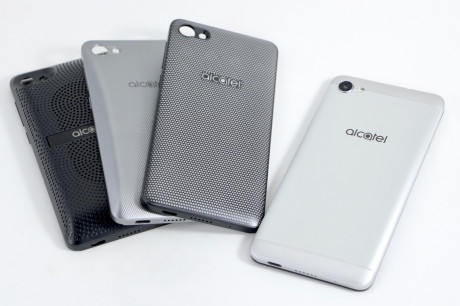
Alcatel's A50 / Pulsemix is an inexpensive Android device that features swappable rear covers. Care to put on a light show? The LED cover bestows the A50 with colorful patterns on the back that light up with your music. Speaking of music, take advantage of the stereo speakers that snap onto the back of the A50, or charge up your battery with the power pack cover. Here is Phone Scoop's review of the Alcatel A50 / Pulsemix.
Hardware
Is It Your Type?
The Alcatel A50 / Pulsemix is an inexpensive Android smartphone that offers SnapBak modular accessories. It's ideal for young users who like the idea of the light-up LED panel, stereo speakers, and extra battery power. You might call it a poor man's Moto Z.
Editor's Note: Alcatel is selling this phone in two variants — the A50 and Pulsemix — but they are identical for all intents and purposes. The A50 is available from Amazon.com and directly from Alcatel, while the Pulsemix is available from Cricket Wireless. Other than the camera sensors, the A50 / Pulsemix are the exact same phone. Alcatel sent us the A50 for review along with the SnapBak accessories.
Body
The A50 is a simple smartphone. I'd call the the design somewhat boring and staid. Alcatel opted for a black glass panel on front and a silver shell for the sides and rear surface. I appreciate that the back is almost shiny, rather than some dull gray, but the appearance is still conservative. The well-defined corners and flat-ish side edges give the A50 a blocky silhouette. Were I a kid, I would not call this a fun phone, at least with the standard back.
I appreciate the glass, which has a great feel to it. It's set into a thin plastic frame that I'd call annoying. The frame is sharp enough along the edges to dig into your hand, but not significant enough to form any sort of protective rim.
The rear shell is a single piece. The shell is made of plastic, though Alcatel attempted to make it look like metal. The bulk of the surface is smooth. Deep, chrome-like grooves separate the smooth portion of the rear panel from two diamond-patterned bands (one on top, one on the bottom). These do help break up the phone's look a bit in a way that's helpful. Alcatel carved a chamfer into the rear edge of the phone, though it doesn't have quite the nice shine that real metal would deliver.
Due to the 5.2-inch screen and thick bezels, the A50 is a mid-sized device. I'd call it a bit too big for most kid-sized hands, or anyone with small hands for that matter. The phone fits into pockets ok; however, the blocky shape can be uncomfortable from time to time.
The fit and finish of the phone is fine. As noted, the glass on front has a nice quality to it. The rear shell could be much sturdier. It fits against the chassis well enough and there were no gaps in the seams, and yet it feels somewhat flimsy on its own. The phone has a good weight to it.
The display vanishes into the black bezels, which are thicker than I like to see. The capacitive home button is represented by a small white circle. This key and the invisible back and app-switcher buttons to other side work well as long as you can find them.
The excellent profile and textured surface of the screen lock button make it easy for your thumb to locate it on the A50's right edge. Travel and feedback are perfect. The volume toggle, positioned just above the screen lock key, has a more subtle profile and smooth texture. Travel and feedback are rather mushy on that one.
A standard headphone jack is located on the A50's top edge, while the USB-C port and speakerphone are on the bottom.
I do like the two patterned sections of the rear panel, as they give the phone what little personality it has. The camera module protrudes quite a bit. About the only other thing adorning the A50's rear is the Alcatel logo, painted on in gray.
Camera Module
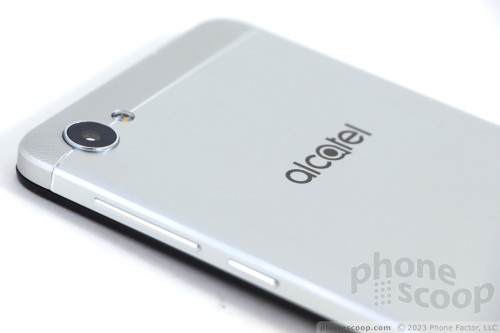
Unlike the Motorola Z modular system — which relies on magnetic, hot-swappable modules — the A50 requires you to remove the entire rear shell of the phone to make use of the SnapBak covers. When viewed this way, I suppose it's more accurate to call them alternate rear covers, rather than modules. Whatever we call them, the A50's rear panel requires some effort to remove. There's a notch in the lower corner, but the clasps hold on fairly tight. Little hands might struggle pulling the panel off to switch backs.
Inner Pins
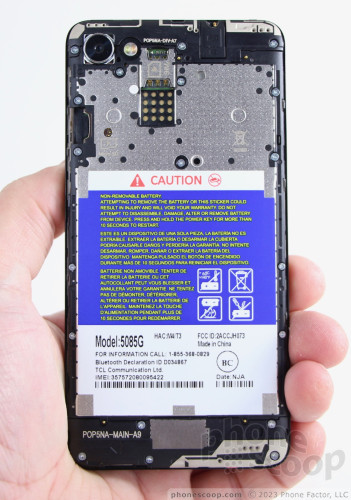
Removing the A50's rear panel lets you access the SIM and memory card slots, but the battery is not removable.
The Alcatel A50 is, on its own, rather non-descript. The swappable SnapBak rear covers define it. Without them, it's a boring old Android handset. Alcatel did manage to assemble the phone in good fashion, and it functions as intended.
A50
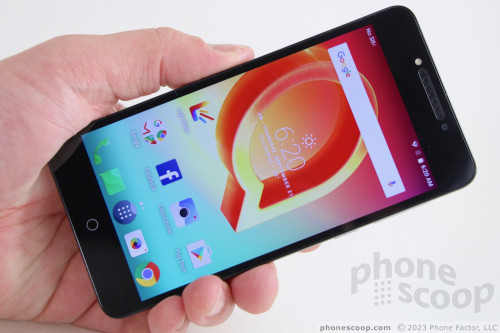
Screen
The A50's display measures 5.2 inches across the diagonal and has 720p HD resolution. That's not the best-ever combo. Text and icons could be sharper. The LCD panel puts out a decent amount of light and I was able to use the screen indoors with no problem. The phone lacks protection from fingerprints and it takes about 5 seconds to oil up the glass with a nasty layer of grime. This really gets in the way of visibility outdoors, even when you crank the brightness all the way up. It's gross and frustrating, particularly when you want to use the camera.
Colors lean a bit cool to my eyes, and there's a definite blue shift when the phone is tilted to and fro. The display suffices, but it could be a lot better.
Signal
I tested the A50 on AT&T's network in and around New York City. (Cricket also uses the AT&T network.) The phone did a decent job of holding onto the network most everywhere I took it. I was able to connect calls on the first dial each and every time, and the phone didn't drop any calls while I tested it.
Data speeds left a little to be desired, but that's not surprising given the affordable nature of the handset. I was able to enjoy my social networks without issue. Photos loaded in Instagram, Twitter, and Facebook rapidly enough. Streaming media over the network, particularly YouTube and Spotify, was fraught with buffering.
Sound
The A50 isn't the best voice phone I've used. The earpiece delivers mediocre volume levels even when cranked all the way up. I was able to hear calls at home and in a non-moving car with no problem. Locations like a coffee shop, shopping mall, or city environment easily drowned out the A50's meager earpiece. Clarity was fine most of the time, but I would have appreciated warmer tones. People I spoke to through the A50 said I didn't sound very good.
The speakerphone is adequate at home or in a non-moving car. It's not loud enough for a moving car, busy street, or noisy office space. Clarity is rather crummy.
Ringtones and alerts are just barely loud enough. Thankfully the vibrate alert got my attention most of the time.
Battery
Alcatel gave the A50 a relatively generous 2,800 mAh battery. Considering the lower-resolution display and mid-range processor, the A50 is well-matched to the ample power supply. Users should get through an entire day with absolutely no trouble at all. The A50 often had plenty of juice to spare at the end of the day. The LED and stereo speaker SnapBak accessories did not have any discernible impact on battery life, even after using them for several hours. The phone does a good job getting itself from breakfast to bedtime.
There is no support for rapid charging. Of course, one of the SnapBak accessories is a battery pack.
Bluetooth, GPS, NFC, WiFi
The A50's secondary radios all functioned properly. Bluetooth was painless to use. I made several calls via my car's hands-free system, though they sounded a bit rough. Music had a pleasing tone when passed through a good pair of Bluetooth headphones. The phone had no issue connecting to other phones, accessories, and PCs for swapping files and such.
Google Maps and the GPS radio worked well. The phone consistently located me within a few seconds and was accurate to about 25 feet. Real-time navigation between points was mostly painless.
The WiFi performed admirably. The phone doesn't have NFC.
Software
Lock Screen
The A50's lock screen strays only a little beyond what you'd expect from a stock Android handset.
Lock Screen
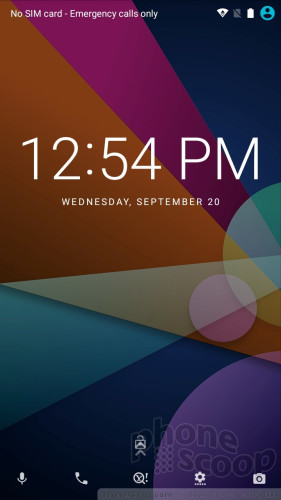
Chiefly, it includes up to 5 app shortcuts at the bottom of the lock screen, rather than the usual two. What's more, you can fully customize which apps appear at the bottom of the screen. Simply tap the one you want, unlock, and you're off!
You won't find an always-on or active display on the A50. Notifications appear below the clock as per the norm. You can dismiss them one at a time from the lock screen, or en masse if you unlock the phone. The clock is a decent size and easy to see (as long as you're indoors.)
Security options are limited to PIN, pattern, and password. There is no fingerprint reader.
Home Screens
Alcatel stuck with a plain version of Android for the A50.
Home Screen
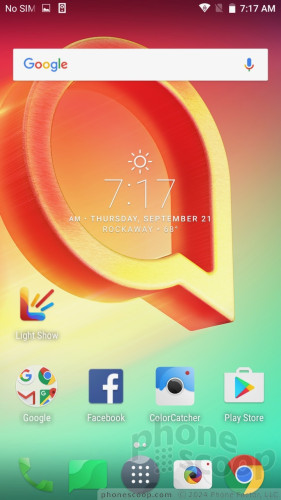
Home screens, the quick settings shade, app drawer, and settings menu all look and act like they do on any other stock Android handset. The one change I see is that the app drawer allows you to rearrange the apps how you prefer, as well as easily delete them.
Performance is middling at best. The A50's 1.5 GHz MediaTek processor struggles a lot with simple tasks, such as opening the browser or settings menu. The meager 2 GB of RAM doesn't help. I'd like to see much quicker performance from this device, but it just doesn't deliver. My guess is most owners will find themselves frustrated with the A50's lack of speed.
Camera
I found the A50's camera app maddening to use. It opens s l o w l y.
The camera interface is a pretty busy place. You've got five items floating along the left side of the viewfinder and four items on the right side, with a scrollable list of shooting modes listed in between.
The controls on the left include night mode, the timer, HDR (on or off), the flash (on, off, or auto), and the full settings menu. The full settings allows you to adjust things such as resolution, grid lines, and location.
There are five basic shooting modes: video, photo, pano, time-lapse, and instant collage. Like the iOS camera app, each of these modes is accessed by swiping the viewfinder back and forth. It's incredibly slow to switch shooting modes. All the modes perform as you expect.
The idea behind instant collage is to allow you to take several pictures and put them together into a single image. (Sort of like Layout from Instagram.) There are five options: two vertical photos together, two horizontal photos together, three horizontal photos, three vertical photos, and four photos arranged in a grid. Like Layout, the final image is square in shape. It's a neat shooting option.
Speed is the camera's biggest problem. It's slow to do everything: focus, shoot, save images, adjust modes, etc.
Photos/Video
The A50 has a 13-megapixel main camera and it's mediocre at best. Exposure is all over the place, focus is rarely sharp, grain permeates many images, and white balance skews warm or cold whenever it feels like it. Indoor photography is more or less pointless with the A50, the results are so bad. Outdoors, when you have plenty of light, you're more apt to obtain acceptable results, as you can see from the shots I got in my backyard. (It's worth pointing out that the Cricket-branded Pulsemix has an 8-megapixel main camera and a 2-megapixel selfie camera, which can't possibly perform any better than the A50's sensors.)
If you're a Snapchat fanatic or selfie lover, the A50 may not be the phone for you. The 8-megapixel front camera is hardly adequate. Focus is the biggest issue, as I rarely saw a sharp selfie. The front camera does manage to do okay with exposure and white balance. The flash doesn't do anything but overexpose your mug.
In a good day, if the sun and stars align, the A50 can sometimes shoot decent-looking video footage. It can handle full HD video and it turned out much better than the pictures did. The time-lapse shooting mode, however, delivers sub-par results.
This is not remotely a phone to replace your grown-up camera, but kids might not mind the results.
SnapBak Covers
There are three covers available for the A50: the Lightup, the Sound, and the Power.
Lightup
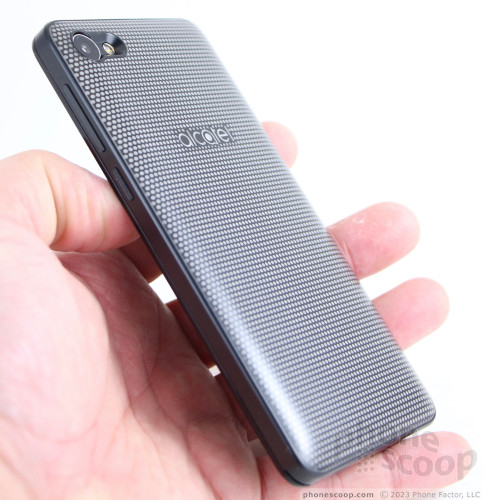
The Lightup SnapBak is by far the most interesting. First, there's nothing "snappy" about it. You have to pry off the original rear cover and firmly install the Lightup back in its place. There's no easy-peasy grab-and-go here; you have to work at this. The Lightup itself is covered with 36 multi-color LEDs all about the size of a pencil eraser. These all contribute to the light patterns. The SnapBak itself is sturdy, well made, and adds some bulk to the phone.
An app on the phone, called Light Show, controls the lights. There are four basic modes of operation: music, games, color catcher, and alarms. The first will play one of 10 pre-programmed light shows whenever the Lightup senses that the phone is playing music, including rain, fire, and traffic. As you can imagine, the rain LED pattern is blue while the fire LED pattern is yellow and orange and so on. These patterns just sort of cycle through over and over. You can also program your own light shows, create specific colors or patterns, or hold your very own disco.
The game mode includes three options of its own: cheer, create now, and light up now. The first is basically an applause meter. The louder you cheer, the more lights will illuminate. This is definitely for parties. The "create now" mode allows you to create your own light show using dozens of colors, patterns, and so on. It is easy enough to figure out. Last, the light up now mode simply turns on the pretty lights in the same pre-programmed patterns as Music mode.
The Color Catcher tool lets you aim your A50 at anything and record the color. The color will then be matched by the LEDs on the back. You can use the Color Catcher to create your own theme for the phone. It will pick related tones to match what you record via the camera and then do its best to match them through the LEDs on the back.
Last, the alarm mode lets you select how the LED cover behaves with incoming calls, text messages, and other alerts. You can have it put on quite the light show when people try to reach you.
The Lightup SnapBak is definitely for kids. My 10-year-old daughter thought it was totally rad, while my 12-year-old daughter merely chuckled a bit.
The Sound Snapback strongly resembles the modular speaker JBL makes for the Moto Z. There's no app involved. Pins on the back make contact with the interior pins of the A50 and any and all sounds are instantly rerouted to the speaker.
The Sound SnapBak is significantly big. It adds as least a half-inch of thickness to the phone and plenty of weight. It's not something you're going to want to carry around attached all the time. It's a shame you have to also carry around the stock rear cover for when you pull off the Sound. Other things to note: It doesn't have any power of its own, so it draws from the A50, and it has a kickstand.
Sound
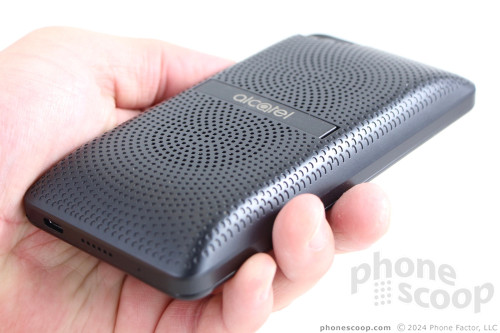
Unfortunately, it crashed the A50 every time I put it on, forcing me to restart the phone.
It's certainly loud. Any kid should be happy to make this much noise in their room. It's more than loud enough to fill a picnic space, beach blanket, bedroom, or even a decent-sized living room with sound. The sound quality isn't all that great. I thought it came across as thin and tinny; there's no bass to really speak of. It amplifies the sound and that's about it.
Last, the Power SnapBack. It's thicker than the Lightup, but thinner than the Sound. It has 3,100 mAh of its own power, which can fully recharge the A50 and then some.
Power
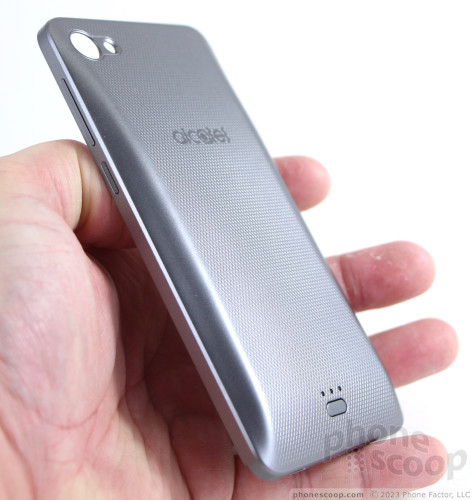
There are some significant drawbacks. First, it cannot be charge on its own. That means the only way to fill up the battery is to attach it to the A50. It does not charge rapidly, and it does not charge the A50 rapidly. This is not an attachment made for quick powerups. Your best bet is to assemble the entire thing and leave it plugged in overnight. Reassemble the A50 with the standard cover in the morning and pull the Power SnapBak out of your back if you need a slow recharge.
Wrap-Up
The A50 has good intentions, but veers off the road into a hellscape of bad execution. It delivers an uneven experience that make it a highly questionable purchase.
On its own, without the SnapBak attachments, the hardware is acceptable for such a low-cost device. The components are put together well enough, and the footprint isn't so bad. The display is sub-par, voice performance was so-so, and data performance was just acceptable. Battery life was a bright spot.
The MediaTek processor is no match for even the bare-bones version of Android running on this phone and it runs sluggishly. The camera app is a sore point; worse, the A50 is just barely worth using as a camera.
I was hoping the SnapBak accessories would add value similar to the way the Moto Mods do with Motorola's Z-branded handsets, but it's not even close. Alcatel's poor vision gives me a new appreciation for how well Motorola's Mods work.
The SnapBaks require you to fully remove the stock cover in order to use them. The LED lights impressed the heck out of my kid, but teens and adults probably won't care. The speaker is just OK, and the battery pack is inconvenient in every way.
Pricing for the A50 / Pulsemix ranges from $30 to $150 depending which company you buy it from (Amazon or Cricket). Even at $30, I'd call it a no-go, even for kids.
A50

Comments
No messages

















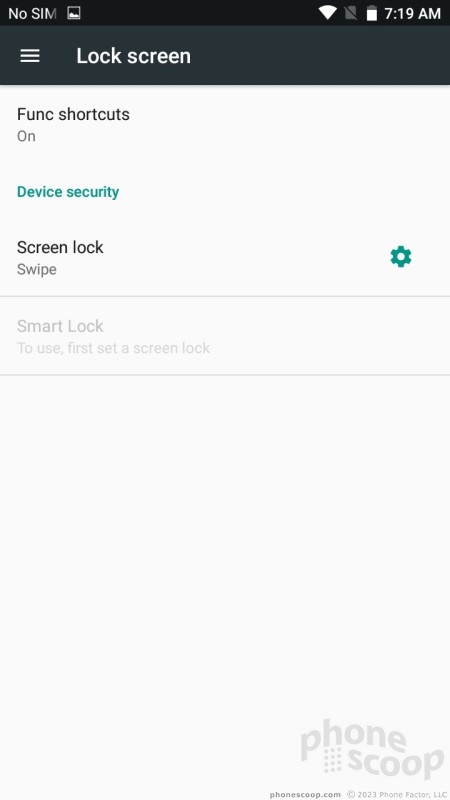





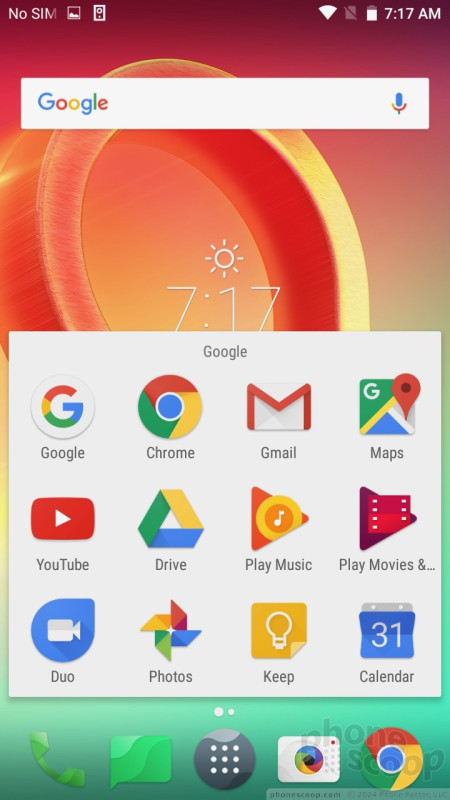





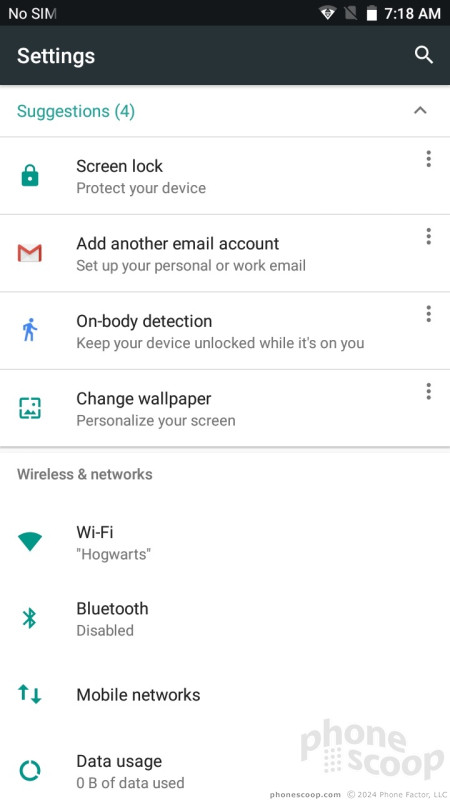











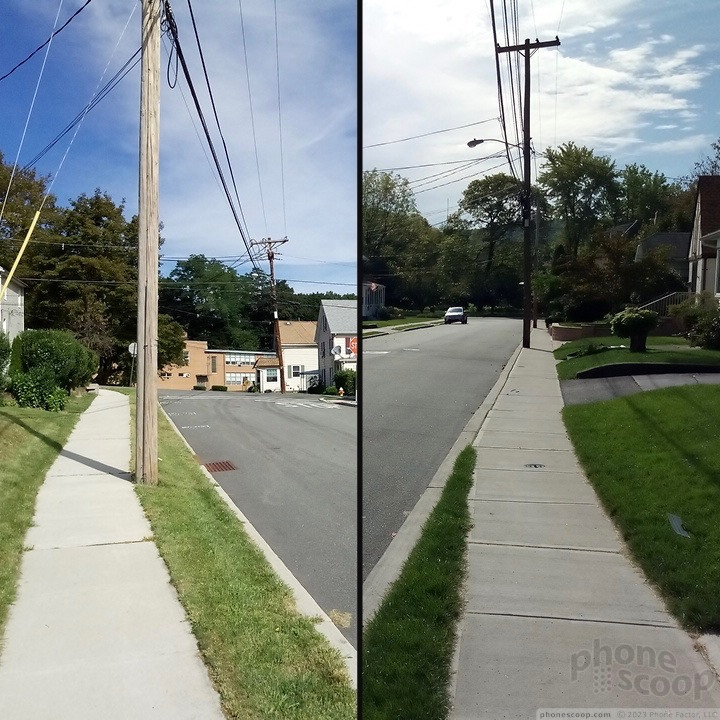




















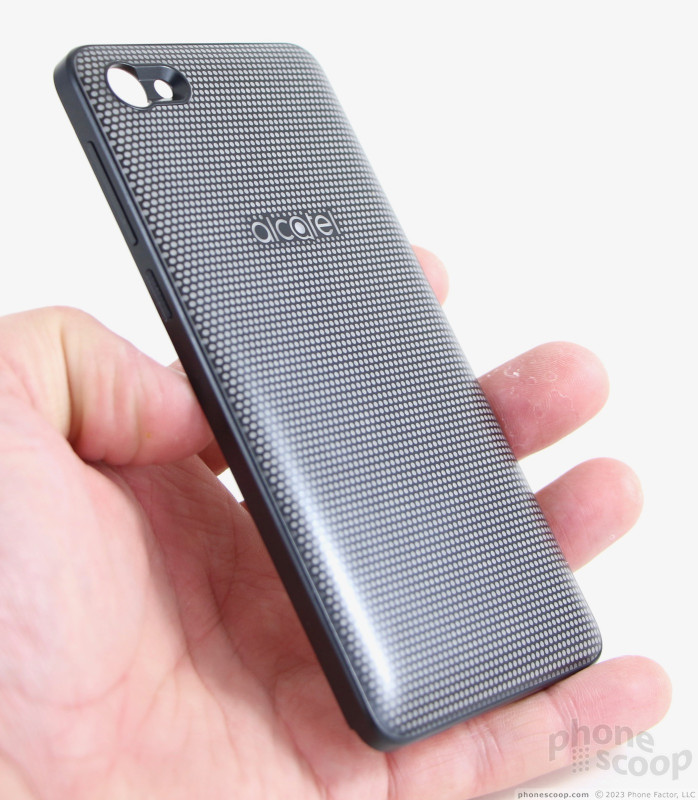







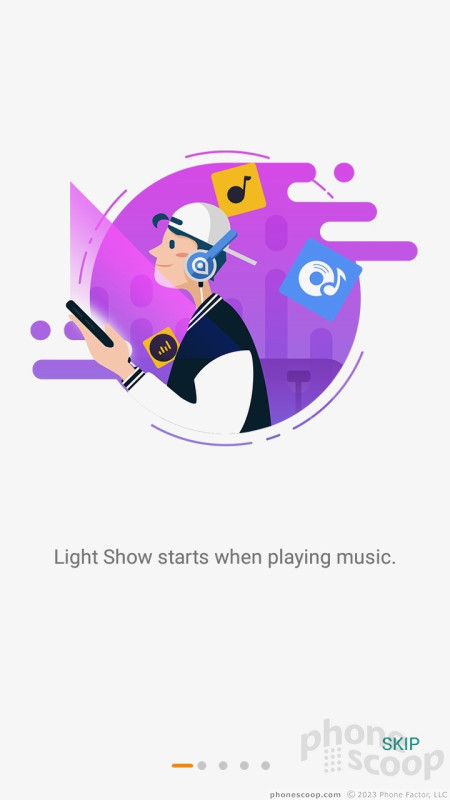










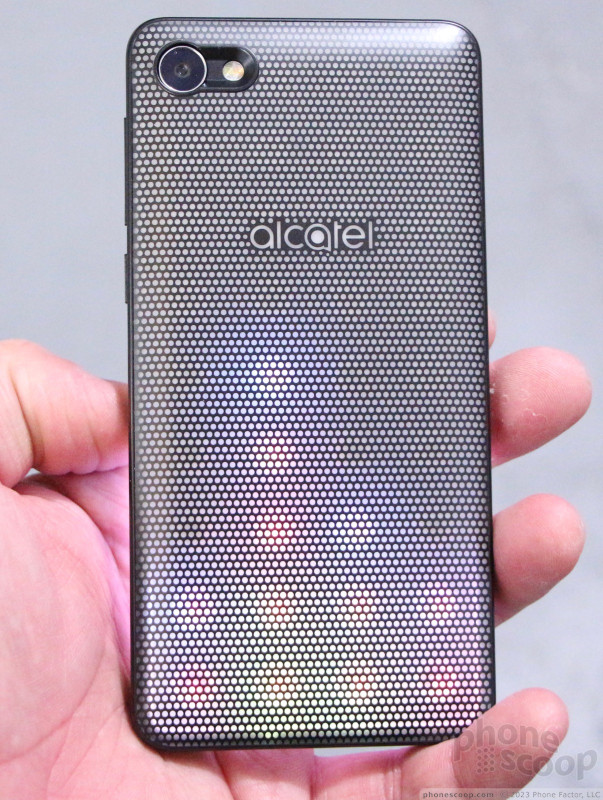





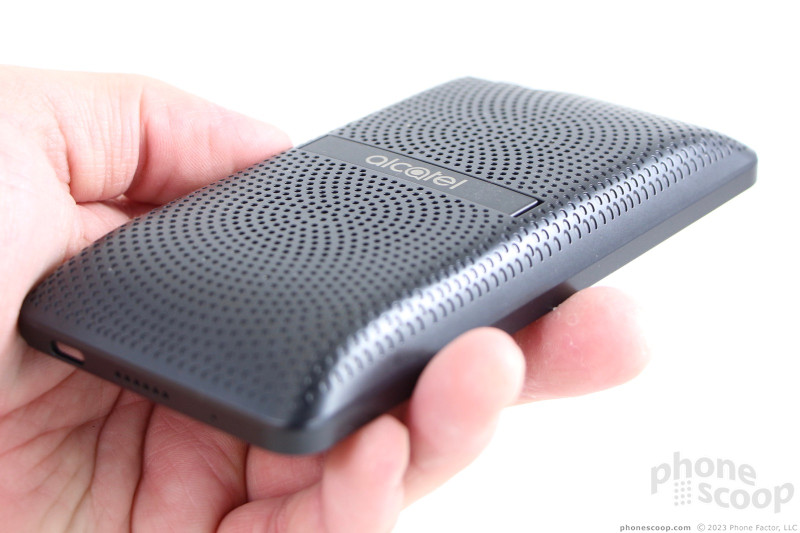









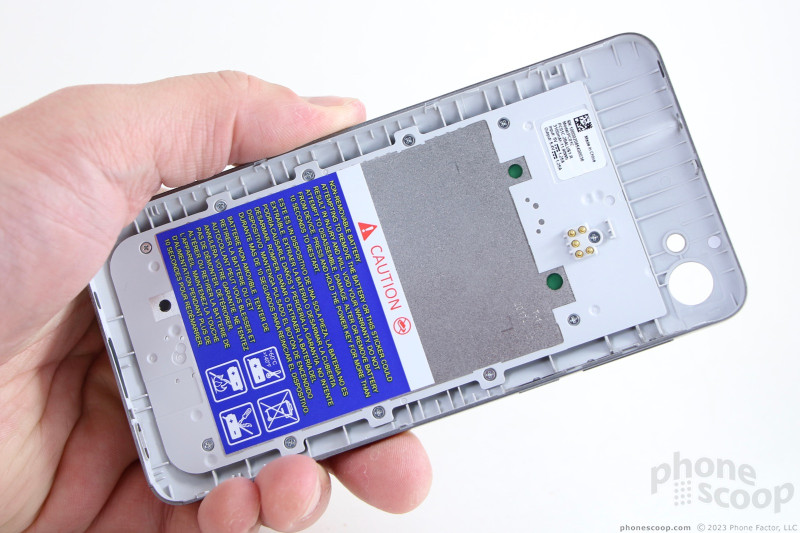








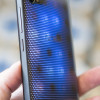 Hands On with the Alcatel A5
Hands On with the Alcatel A5
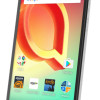 Alcatel's Modular A50 Parties with Light Up LED Accessory
Alcatel's Modular A50 Parties with Light Up LED Accessory
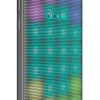 Alcatel A5 with LED to Make Its Way Stateside
Alcatel A5 with LED to Make Its Way Stateside
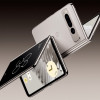 Google Confirms, Teases Pixel Fold
Google Confirms, Teases Pixel Fold
 Google Bringing Generative AI to Android Messages, Wallpaper
Google Bringing Generative AI to Android Messages, Wallpaper
 Alcatel PulseMix / A50 / A5
Alcatel PulseMix / A50 / A5



